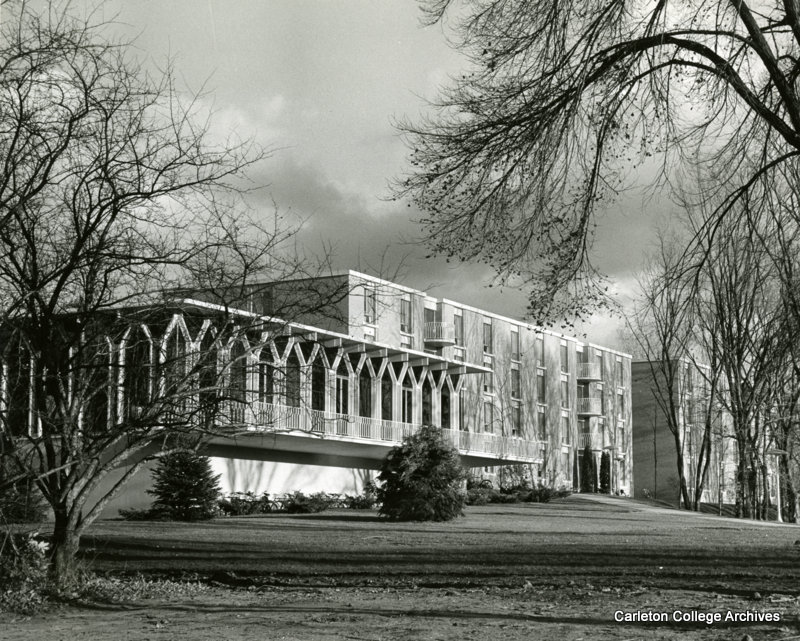As part of our project to create models of buildings, past and present, on Carleton’s campus, we need pictures. Is there any place better to get pictures of Carleton College than the college itself? The archives have a whole lot of pictures which should be more than enough for our uses, especially considering that they cover almost 150 years of history! At least, that’s what I thought. Turns out the archives are pretty confusing to navigate and are much smaller in scale than I thought. Modern buildings, too, are basically absent from the collection of images. This meant that when I started looking for pictures of Goodhue Hall (built in the 1960s), I didn’t find exactly what I hoped to.
The Complexity of the Archives
When I started my search for pictures of Goodhue, I started at the Hacking Humanities Course Guide–a reasonable place to start, no? From that page, I found two different “archive” sites, the distinction between which I still don’t understand. One had a few pictures of Goodhue Hall from the ’60s, although they were severely lacking in metadata. These pictures had barely any information attached to them: I could only find a basic name and general date, really. The second had absolutely no pictures of Goodhue Hall–however, the details of the pictures it did have were all meticulously tabulated and listed. Thus, I learned of one of the most frustrating parts of the digital humanists’ mission.
The Problem With Metadata
Metadata is vitally important for anyone who is working with data–digital humanists, perhaps more so than most. My only experience with metadata before this research involved marking each and every one of the mp3 files in my music library with properly-spelled titles, artists, and albums–and maybe years if I was feeling lucky). Even though I had a program to help me out with this (the aptly named mp3tag), the process wasn’t easy. Manually entering metadata into a spreadsheet, as we did for the pictures we found in the archives, was even more difficult. Looking at the table now, it’s easy to see the problems with this approach. Each researcher used different formats of keeping track of metadata for pictures they found; some used sentence case, some used all lowercase, and some only capitalized proper nouns. The differences in metadata provided also caused some gaps in the table. My pictures, for example, had not creator or photographer associated with them, while pictures found in the better-tabulated Contentdm archive–the majority of the time–did. This meant that I had to leave important fields, like creator, blank, while I had to fill in others, like description, with my own description.

One of the three pictures of Goodhue Hall I found–there’s another taken from about two feet higher than this vantage point.
That being said, metadata is definitely a useful tool. Searching through these archives was made much easier due to the ability to search by category, or to narrow down photographs by date. Being able to search by contributor, even, could definitely be helpful in some cases. The only problem lies with collecting data in a non-standardized, organic way–for example, by having ten different people enter data for ten different pictures. However, this is a problem that’s hard to avoid due to the lack of standardization of the internet. Without already having a consistent system for categorizing data, it’s almost impossible to write a script that will find the pieces of data you need from the mess that is the world wide web.
I enjoyed reading your blog! I see that you have evidently devoted much thinking and effort into this post and I am surprised by the fact that it can be this thorough and detailed. Moreover, I really appreciate your given example of sorting the mp3 files. I agree that this presents much resemblances and is very persuasive for your argument (indeed it can be laborious to sort out the metadata). At the same time, I also strongly espouse, just like you do, that metadata is an essential and conducive tool as it seems to illustrate more advantage than drawbacks.